June 10, 2013
Members’ Talks
Mike Meynell, Rachel Alexander and Ian McDowell
Report by: Mike Meynell
The 2012/13 Flamsteed season has been a particularly busy one, with over 50 organised events offered to Flamsteed members. This was our tenth, and final, lecture of the season, but we’ve also offered 16 observing events in Blackheath, Cudham and Romney (of which 8 have been successful – a 50% strike rate is not bad for the UK!), 5 radio astronomy meetings, 3 history of astronomy meetings, 6 28-inch viewing evenings, 2 workshops (a telescope workshop and an astrophotography workshop) and, of course, 10 pub evenings! Adding to that the various other events, such as Stargazing Live, the visit of the BBC Sky at Night team, and various events surrounding the opening of the “Visions of the Universe” exhibition and I think we can honestly say that it’s been our busiest season ever.
Planning is well underway for the 2013/14 Flamsteed season, which promises to be just as busy, with some very high quality lecturers coming to the Flamsteed. Of course, there is still more to come over the summer months, with various observing sessions planned and the continuation of the pub social evenings. Plans for the society trip to CERN in September are also well advanced.
The final lecture of the Flamsteed season, by tradition (if two years in a row can be considered a ‘tradition’!), has been turned over to Flamsteed members so that they can give talks about aspects of astronomy that interest them. We had great pleasure in welcoming Rachel Alexander, who gave a talk about Pluto, and Ian McDowell, who gave a talk about the isotopic composition of water in the Solar System.
As the ‘warm-up’ act, I extended our usual pre-lecture talk on the ‘Sky this Month’ to talk about the ‘Sky this Season’ – what to see in the night sky during the summer months. Though the skies don’t get truly dark during the summer… at least not until well after midnight… there is still plenty to see. I offered up a few ideas, which have already been summarised in a separate report, and included the Summer Milky Way, the constellation of Sagittarius and the Perseids Meteor Shower. It’s always worth going out to stargaze during the summer months, not least because (normally!) it is not necessary to wrap up like a Michelin man and you can enjoy the sights overhead on a balmy summer evening, rather than freezing bits off in a biting wind in the middle of winter! My main tip is to get yourself a deck chair and a pair of binoculars and enjoy scanning the sky overhead.
Rachel Alexander gave a talk about the dwarf planet Pluto… focussing on how it was discovered, how it was named and why it has now been ”downgraded” from a planet to a dwarf planet. The presence of an object beyond the orbit of Neptune had been suspected since the 19th century, but it took until 1930 before Clyde Tombaugh discovered the object using a 13-inch astrograph and an instrument known as a blink comparator at the Lowell Observatory. Even with this relatively new technique and the knowledge of where the object was likely to be, it still took 10 months of painstaking work before Tombaugh finally found a candidate moving object on February 18, 1930, which was later confirmed to be the missing “Planet X“. At 15th magnitude, this was an incredibly faint object, and it is a testament to Tombaugh that he managed to find it after examining nearly 2 million stars.
The naming of the object happened surprisingly quickly, with a vote at the Lowell Observatory on March 24, 1930 agreeing on the name “Pluto”. Several other names were considered, including Minerva and Cronus. The name “Pluto” was proposed by an eleven-year-old schoolgirl from Oxford, Venetia Burney, who received the princely sun of £5 as a reward. A very appropriate name, as Pluto in classical mythology is god of the underworld… and Pluto, with an average surface temperature of -230 degrees celsius and an apparent magnitude of 15, is an incredibly cold and dark world.
In 2006, the International Astronomical Union gave a new definition for a planet. They stated that a planet must:
- be in orbit around the Sun;
- have sufficient mass to assume hydrostatic equilibrium (i.e. have a nearly round shape);
- be able to clear the neighbourhood around its orbit.
Sadly for Pluto, it failed on this last of these criteria, since its mass is only 0.07 times the mass of other objects in its orbit. It was therefore downgraded to the newly created category of “dwarf planet”, into which category has also been placed Ceres, which lies in the asteroid belt between Mars and Jupiter. For those of us who were brought up in the ‘knowledge’ that there were 9 planets in the Solar System, September 13, 2006 is a date that will live in infamy. How can we be expected to remember the order of the planets when the mnemonic phrase “My Very Educated Mother Just Served Us Nine Pizzas” can no longer be used!!
Ian McDowell gave a talk to the society for the second year running, after his excellent talk on the Mars Science Laboratory last year. Ian’s talk on the isotopic composition of water in the Solar System was inspired by the possibility of 2013 being the ‘year of the comets’, though sadly Comet C/2011 L4 PANSTARRS didn’t quite live up to expectations. Let’s hope for better things from Comet C/2012 S1 ISON in November / December this year. Ian started with a diagram showing how much water is on Earth. An extraordinarily tiny amount. In fact there is a greater volume of water on Europa, orbiting around Jupiter, than there is on Earth. Ian informed us that the further you go out into the Solar System, the more likely you are to encounter water.
Ian took us through the definition of an isotope, which are variants of a particular chemical element, with the same number of protons and electrons, but with different numbers of neutrons. Oxygen-16, with 8 protons and 8 neutrons is the most common oxygen isotope in nature, with Oxygen-18 (8 protons and 10 neutrons) being the next most common. The most stable hydrogen isotopes are the ordinary isotope of hydrogen (sometimes called “protium”, with one proton), deuterium (with one proton and one neutron) and tritium (with one proton and two neutrons). The most common element on Earth is oxygen as all the rocks are made of silicate and each silicate contains oxygen. The oxygen in our atmosphere is due to photosynthesis.
The isotopic composition of water changes as it changes from a liquid to a solid, or from a liquid to a gas. It is therefore possible to determine the history of a sample by looking at the ratio of isotopic compositions. When water is evaporated from the oceans in tropical regions, there is a small fractionation towards oxygen of lighter isotopes (oxygen-16) than the heavier isotopes. So the air above is enriched in oxygen-16 in comparison to oxygen-18. As the air circulates away from the tropics, some of the water vapour eventually falls as snow at the poles. This means that the water at the poles is much lighter, isotopically, than water in the tropical oceans. This process is very temperature dependent, which is why taking ice cores at the poles can be used to determine historic temperatures of the Earth.
Based on this analysis, we now have the ‘fingerprint’ of water on Earth, so it is possible to determine if material has come from elsewhere. The Viking lander determined the isotopic properties of the atmosphere of Mars, which allowed us to determine which meteorites had originated from Mars.
Sadly, technology problems prevented Ian from completing his fascinating talk. We won’t be using iPads for lectures in the future, that’s for sure!! Despite these issues, Ian was able to give us a very interesting insight into what is a huge topic and one that we hope to return to in future Flamsteed lectures.
The evening ended with a Q&A session, before members gathered outside the lecture theatre for our usual post-lecture refreshments.
Pictures from the Evening (by Grey Lipley):
- Rachel Alexander
- Peter and Brian serve refreshments before the lecture evening
- Flamsteed members gather for the last lecture of the season
- Grey prepares to host the evening
- Catching up on news
- Brian, Mike and Ian chat prior to the lecture evening
- An excellent attendance for our ‘members talks’ evening
- Grey introduces the lectures
- Ian McDowell
- Ian takes questions after his lecture
Posted under: Flamsteed, Flamsteed Lecture, Meeting Report
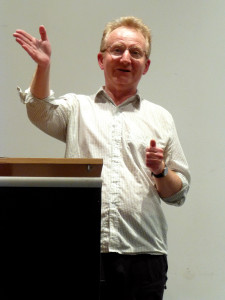
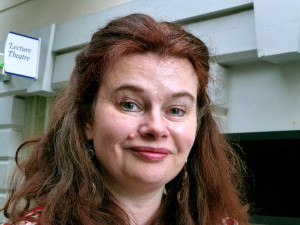
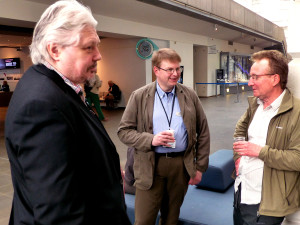
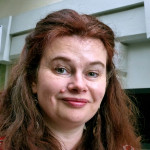
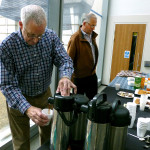
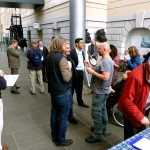


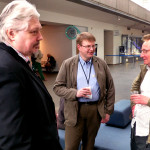
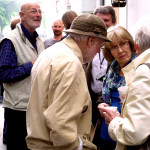
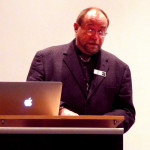
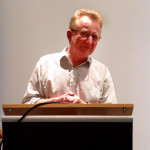
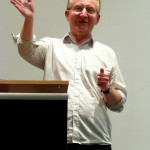

You must be logged in to post a comment.